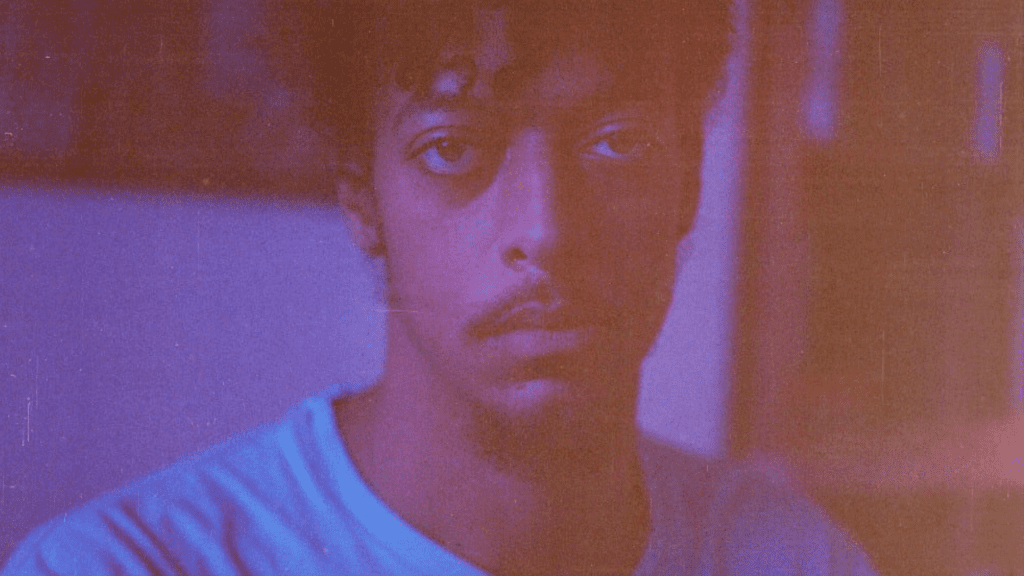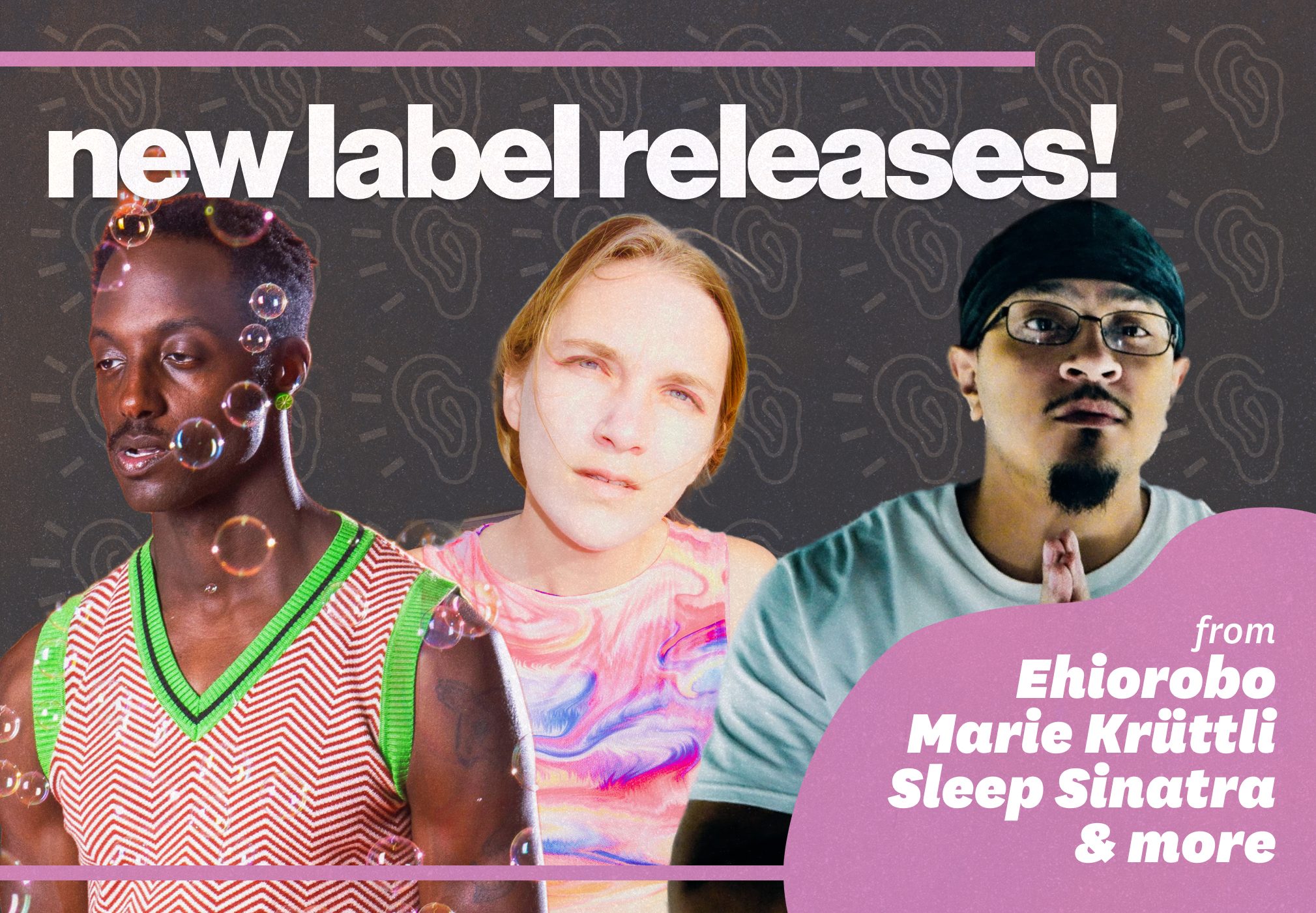Manonmars, or Jack Martyn Richardson, has one of the most unique styles in modern hip-hop. The U.K. rapper and visual artist oscillates between working with music, paint, and photography. Two records and an EP into his music career, Manonmars has proven himself a distinctly poetic voice—particularly within the contemporary U.K. rap sphere—weaving an opaque lyrical approach with harsh, sparse instrumentals.
His first album, self-titled, was released in 2018. With a bold cover shot by photographer Paulina Korobkiewicz—a frequent collaborator, working with on Manonmars’ album covers and an art magazine titled Synergy—and production entirely by O$VMV$M—a production duo of Amos Childs and Sam Neek—Manonmars is a unique and daring album. Difficult to even define as a traditional rap record, the album moves between slower spoken word sections, grim and grainy digital instrumentals, and, sometimes, a more typical approach to rapping with Manonmars’ still refreshing abstract, otherworldly, and observational lyrical style. The beauty of his lyricism contrasts his topics of choice and O$VMV$M’s grim beats.
What is most noticeable from Manonmars is Richardson’s monotone flow and intelligence with the pen. The cynicism is staggering. “Cherry” opens with lines about the darkest points of hedonism, as Richardson explains struggling with his mental and physical health. He gets direct, saying, “I heard there’s six milli’ ways to die, I’m just sifting through.” This brutal honesty, Richardson’s deep, almost flat voice, and the slow, thunderous digital thuds of O$VMV$M’s production summarize much of what makes Manonmars’ music so memorable and so powerful. The moodiness is intense and confrontational, but a track like “Vacate,” which sees the album become briefly gentle, shows impressive artistic versatility.
As a rapper, Manonmars’ ability is immediately striking. His lyricism is as beautiful as it is bleak and shows a fierce wit. The opening verse of his second album, In Colour, explains, “Some call it rapping, I’m just taxing off laws of attraction / The bars are a form of entrapment, but easily, they’re reaching frequencies I could only imagine.” The second track, “BR3323,” even has a rhyme scheme based on the Fibonacci sequence. Opening with “double up, Fibonacci,” the number of syllables between rhymes matches the early numbers in the sequence. It’s a beautiful intricacy, not too noticeable for those unaware of this radical approach due to Manonmars’ ability to make such a flow sound great.
That focus on rhythm—and the influence of mathematics—is seen as part of Manonmars’ process across his artistic ventures. When I spoke to him and Korobkiewicz in 2022, he explained he is “interested in symmetry and how numbers and colors cross paths.” He later continued, “I don’t play any instruments and can’t read notes, so I would say that painting and writing raps is my way of broadening my understanding of rhythm and pattern.” Richardson’s work as a painter also shows a calculated, almost algorithmic focus on patterns. He said he frequently moves between these mediums, “work[ing] on multiple projects at once to avoid losing interest by pursuing one for too long.” Manonmars is constantly moving, always producing artwork and making the rules for his own work to follow. All forms of his art are wild and experimental. Even his photography has a hazy feel with stretching lights, superimpositions, and trippy, vivid lighting.
In Colour captured Manonmars as he grew further into his artistic potential. For example, the simple beat to “Hollow,” is lethargic and sleepy, as are the three rappers featured, until Manonmars’ verse at the end. Then, various jagged, glitchy, and layered sounds bury the beat. It’s a phenomenal track with incredible features. More widely, the album is full of beautiful and haunting moments. O$VMV$M’s production is dreary but quietly catchy, and the feature verses—though few and far between—are excellently curated.
Between his two albums, Manonmars collaborated with Bogues, Ishan Sound, and Neek on the Burning Paper EP. Recorded before In Colour but released in 2022, the EP is an interesting mid-point between Richardson’s two full-length records, seeing him explore a traditional style of rapping on more accessible beats. Hearing Manonmars rap over a more typical beat is fascinating, only making his personal style stand out further. It also captures some of his most energetic performances on tracks like “Cool Runnings” and the manic “Nuke the Threat.”
Manonmars doesn’t define himself strictly as a rapper nor does he care to give away the secrets of his form and style. During our previously mentioned interview, he said his artistic inspirations at the time were the likes of Miles Davis, DJ Rashad, Gaspar Noe, Mati Klarwein, Tomek Reyk, Ultraboyz—an eclectic mix of musicians, painters, and filmmakers.
Ultimately, Manonmars’ mysterious approach to music is best summarized by his statement, “I like to leave it up to you to decide.” Little is known about the man behind these beautifully abstract lines and swaggering flows, but there is much to be enjoyed (and analyzed) in the quality of his work across the board—as a painter, as a photographer, and as a musician.





